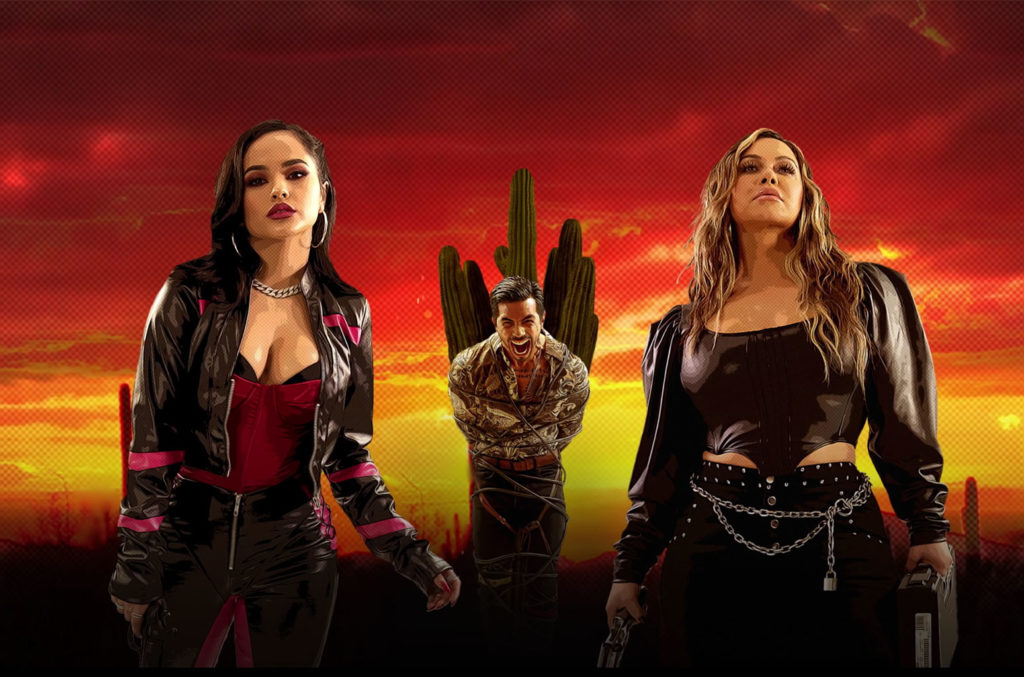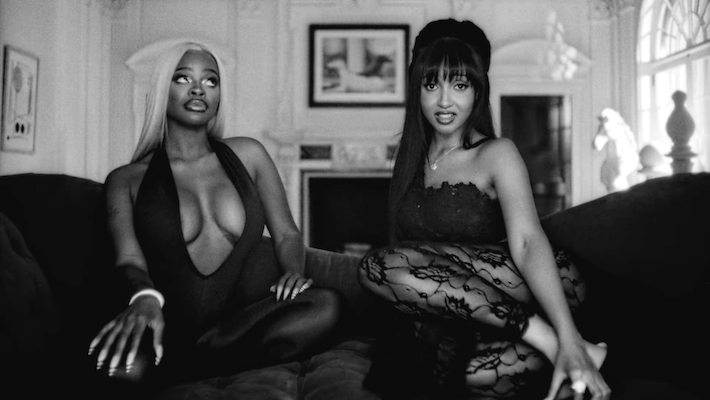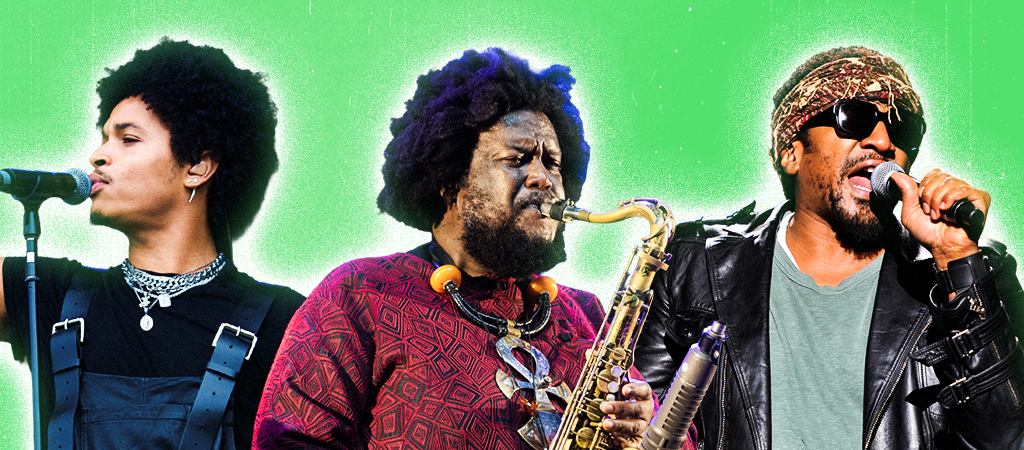Animated music videos are not a new trend in music, but because of the current health crisis, more and more artists are turning to cartoon or emoji-inspired visuals to accompany their new singles.
As a result of artists being limited to traveling and filming videos in big groups, there’s no doubt that animated music videos have become a growing fad in 2020.
In an exclusive set of interviews with three different Latin directors, Billboard talks about the new normal, working with social distancing, and the future of video. Read the Q&As below.
Sebastian Mejia, Director of Rauw Alejandro’s “Algo Magico”
After forming an alliance with creative Puerto Rican agency Buena Vibra Group and his company Diptongo for concert visuals in Puerto Rico, Sebastian Mejia, 37, geared towards animated music videos as an income option during the pandemic.
The very first video he directed was Rauw Alejandro’s “Algo Magico,” released on June 25. In the video, two masked cartoons are traveling the world on a dragon as they get to know each other. “Rauw had this idea in his head of Stranger Things and a parallel world. He’s into anime and the Japanese culture,” Mejia, who has nearly 10 years experience as a director, tells Billboard.
The mesmerizing music video, which recently nabbed “best animated Latin music video of 2020” in a Billboard fan poll, was initially proposed by Max Perez of Buena Vibra Group. “Timing was the most challenging part of the creative process,” Mejia says. “From the time the proposal was presented to the final product, the work tripled. They were three weeks of no sleep but my team’s commitment was incredible because everyone was committed from day one.”
What other projects have you worked on during the pandemic?
Before the pandemic, with Buena Vibra, we worked on many projects with Amenazzy, Lunay, Myke Towers, Arcangel, Tommy Torres, Eladio Carrion, Kevin Roldan, Zion & Lennox, and now, Rauw Alejandro. We have many pending projects. We already have an animated video ready for Zion & Lennox coming soon. We actually have a lot of animated videos lined up, but I can’t talk about them right now.
Because of the pandemic, would you say the demand in animated music videos is the same as in previous years or higher?
It’s a very weird sensation, because I would immediately say yes. Sometimes I don’t even have time to eat. I’m going to sleep at a later time. I’m receiving more proposals and projects to work on. I think it’s one of two things: it’s easier to control all the work in quarantine and from a computer but at the same time, all the phone calls and Whatsapp messages are very time-consuming.
How do you see the future of animation in the music video industry? Do you think it’s here to stay after the pandemic?
Artists have already been doing animated music videos but now it became a necessity. It’s another creative outlet that I can explore. Even if everything goes back to normal, I don’t think this will pass. It’s become an innovative option and the possibility to work on something that artists can’t normally do in real life. The demand for video clips has increased. Now we not only quote animated videos where I direct, but we also receive proposals from other directors who are recording a lot on a green screen and ask us to do all the special effects.
Marlon Villar, Director of Nicky Jam’s “Desahogo”
After establishing a professional relationship with Sony Music, where he’s had the opportunity to work with Ricardo Arjona, Franco de Vita, and the late Jenni Rivera, Cuban director Marlon Villar, 33, was at the helm of Nicky Jam’s latest video for “Desahogo.”
The somber-freestyle, in collaboration with Carla Morrison, shows a cartoon version of Jam telling his life story and struggles on the streets. The clip landed on YouTube’s trending page on the day of its release, June 28. “In the first conversations, Nicky told me that he wanted an animated video where he was sitting on a cliff and venting out everything he wanted to say,” Villar, who has an 11-year trajectory, tells Billboard. “He has qualities that I really like: he has a great balance between knowing what he wants and respecting the proposal of those who collaborate with him.”
From the elaboration of the script to the cartoon designs to the production and animation, “Desahogo” came to life in five weeks. The project was made possible under Villar’s direction, and a team of professionals at Costa Rican-based production company Luz Marina. “Nicky was really happy and satisfied with our work and that made the whole team feel very good because this was a very personal project.”
What other projects have you worked on during the pandemic?
We filmed a music video for a popular band in Costa Rica, which has yet to be released. We’re also part of the production team of an interesting animated project that we will develop in the upcoming months.
Because of the pandemic, would you say the demand in animated music videos is the same as in previous years or higher?
Generally, we’ve been working a bit less, because Luz Marina is a production company that besides animation specializes in special digital effects, and because of the lack of casting and crew we’ve had to put some projects on pause. However, in the area of animation, we’ve seen an increase in work.
How do you see the future of animation in the music video industry? Do you think it’s here to stay after the pandemic?
I think everyone in the industry can agree that animation has always been a powerful tool but not every artist or director feels comfortable doing a digital music video. But like everything in life, it’s the moments of crisis that encourage us to get out of our comfort zone. I think that moving forward, animated music videos will stay for the long run and be in high demand. Maybe the videos won’t be fully animated but yes with a fusion of resources.
Jesús Cázares, Director of Chiquis & Becky G’s “Jolene”
In June, Chiquis and Becky G premiered the animated video for “Jolene,” inspired by comic books and Old Western films. Though the song was recorded before the pandemic, the music video, which has a mix of cartoon and 3D figures, was recorded at home during the quarantine. The action-packed clip was created by Autumn Leave Films in association with The Sixth House.
“This video was initially supposed to be a Live-Action but because of the pandemic, we had to turn things around and make it fiction,” Texas-based Mexican director Jesús Cázares tells Billboard. “We had our doubts at the beginning but it was something different and everyone was happy at the end. Both Chiquis and Becky portrayed powerful characters in tough situations.” In a span of nearly two months, the 27-year-old director and entire team at Autumn Leaves Film brought the video to life.
It was hard work, Cázares admits. Both Becky and Chiquis recorded their parts at home, while the production team worked at the studio. With the help of professional photographer, Emilio Sanchez, both artists were able to recreate specific emotions and actions from their homes. “It was an interesting process working at a distance,” Cázares, who’s been a director for five years, says. “I think it was nicely done despite the limitations. We had a fluid conversation with both teams and the photographer. Everyone was very connected throughout the creative process.”
What other projects have you worked on during the pandemic?
In the last five months, we’ve done three music videos with Autumn Leaves Film. One of them was for Georgel and Nanpa Básico, which was created at a distance and another one was for Texas-based artist Mitre. We were close, so we were able to do that one in person.
Because of the pandemic, would you say the demand in animated music videos is the same as in previous years or higher?
Our production has definitely changed because of the reduction in crew, actors, extras and even filming locations. The demand has always been there but for the safety of the artist and our team, we had to think of alternative options. The artist needed different ways to connect with their fans and that was made possible with live streams and videos in 360. It’s a good change because artists are adapting to being virtually connected and closer.
How do you see the future of animation in the music video industry? Do you think it’s here to stay after the pandemic?
Of course, because animation allows you to create things that are difficult to do and put artists in places that they cannot physically be, such as in space or on a rocket. The animation will always be there. We have always used it to create more surreal and more complex things. I think the industry is going to turn to videos because it brings people much closer to the artist.



